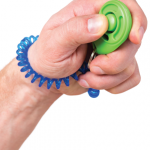On a recent trip to Europe, where I gave a lecture on DNA circulating in the blood (bottom line: it’s in microparticles), I walked about 20 minutes each way to the congress center from my hotel on a narrow, twisting street that looked to be right out of a scene from “The Third Man.” While I could have taken the bus, I like to get up front and personal with a city, taking in the architecture, peering into shop windows, inhaling the aroma of food from the local restaurants. Fortunately, most people in Europe speak English, so that, if I get lost, someone easily can set me in the right direction.
As I have observed on several trips, one of the main differences between Europe and America is the frequency of bicycles, as people of every walk of life whiz around town on their two-wheelers like Tour de France winner Alberto Contador, even if there is howling wind or torrential downpours.
I am always excited to meet and talk shop with people doing important work in places that I honestly had never heard of a few years ago.
In addition to bicycles, trains are still a big part of everyday travel in Europe. Not far from the center of any city, a large terminal—ornately decorated—disgorges hundreds of people on their way to work every minute. In the city in which I lectured on DNA, I had to pass under the train tracks to get to the congress center. Somehow, in Europe, the dense rumble and rattle of trains always sounds ominous, reminding you of terrible times that were not so long ago.
While many of the attendees at European meetings also cross the pond for our meetings, the differences in demeanor and dress of these people become more apparent at European meetings. At the meeting sessions, the European men often wear suits. This practice involves not just the speakers, exhibitors, and drug representatives, but the regular attendees who sit in large lecture rooms taking notes or snapping photos of the slides projected on the mammoth screens. Americans are much less formal, with business casual dress seemingly fine. Even in gray pants and a blue blazer—the standard uniform of an American academic physician giving a talk—I feel underdressed in Europe, tempted, on the way home, to get an upgrade at the Zegna or Boss duty-free shop in the airport, using up my euros to avoid costly currency exchanges.

